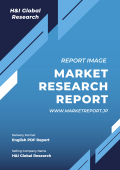1 Preface
2 Scope and Methodology
2.1 Objectives of the Study
2.2 Stakeholders
2.3 Data Sources
2.3.1 Primary Sources
2.3.2 Secondary Sources
2.4 Market Estimation
2.4.1 Bottom-Up Approach
2.4.2 Top-Down Approach
2.5 Forecasting Methodology
3 Executive Summary
4 Introduction
4.1 Overview
4.2 Key Industry Trends
5 Global Next-Generation Sequencing Market
5.1 Market Overview
5.2 Market Performance
5.3 Impact of COVID-19
5.4 Market Forecast
6 Market Breakup by Sequencing Type
6.1 Whole Genome Sequencing
6.1.1 Market Trends
6.1.2 Market Forecast
6.2 Targeted Resequencing
6.2.1 Market Trends
6.2.2 Market Forecast
6.3 Whole Exome Sequencing
6.3.1 Market Trends
6.3.2 Market Forecast
6.4 RNA Sequencing
6.4.1 Market Trends
6.4.2 Market Forecast
6.5 CHIP Sequencing
6.5.1 Market Trends
6.5.2 Market Forecast
6.6 De Novo Sequencing
6.6.1 Market Trends
6.6.2 Market Forecast
6.7 Methyl Sequencing
6.7.1 Market Trends
6.7.2 Market Forecast
6.8 Others
6.8.1 Market Trends
6.8.2 Market Forecast
7 Market Breakup by Product Type
7.1 Instruments
7.1.1 Market Trends
7.1.2 Market Forecast
7.2 Reagents and Consumables
7.2.1 Market Trends
7.2.2 Market Forecast
7.3 Software and Services
7.3.1 Market Trends
7.3.2 Market Forecast
8 Market Breakup by Technology
8.1 Sequencing by Synthesis
8.1.1 Market Trends
8.1.2 Market Forecast
8.2 Ion Semiconductor Sequencing
8.2.1 Market Trends
8.2.2 Market Forecast
8.3 Single-Molecule Real-Time Sequencing
8.3.1 Market Trends
8.3.2 Market Forecast
8.4 Nanopore Sequencing
8.4.1 Market Trends
8.4.2 Market Forecast
8.5 Others
8.5.1 Market Trends
8.5.2 Market Forecast
9 Market Breakup by Application
9.1 Biomarker and Cancer
9.1.1 Market Trends
9.1.2 Market Forecast
9.2 Drug Discovery and Personalized Medicine
9.2.1 Market Trends
9.2.2 Market Forecast
9.3 Genetic Screening
9.3.1 Market Trends
9.3.2 Market Forecast
9.4 Diagnostics
9.4.1 Market Trends
9.4.2 Market Forecast
9.5 Agriculture and Animal Research
9.5.1 Market Trends
9.5.2 Market Forecast
9.6 Others
9.6.1 Market Trends
9.6.2 Market Forecast
10 Market Breakup by End-User
10.1 Academic Institutes & Research Centers
10.1.1 Market Trends
10.1.2 Market Forecast
10.2 Hospitals & Clinics
10.2.1 Market Trends
10.2.2 Market Forecast
10.3 Pharmaceutical & Biotechnology Companies
10.3.1 Market Trends
10.3.2 Market Forecast
10.4 Others
10.4.1 Market Trends
10.4.2 Market Forecast
11 Market Breakup by Region
11.1 North America
11.1.1 United States
11.1.1.1 Market Trends
11.1.1.2 Market Forecast
11.1.2 Canada
11.1.2.1 Market Trends
11.1.2.2 Market Forecast
11.2 Asia Pacific
11.2.1 China
11.2.1.1 Market Trends
11.2.1.2 Market Forecast
11.2.2 Japan
11.2.2.1 Market Trends
11.2.2.2 Market Forecast
11.2.3 India
11.2.3.1 Market Trends
11.2.3.2 Market Forecast
11.2.4 South Korea
11.2.4.1 Market Trends
11.2.4.2 Market Forecast
11.2.5 Australia
11.2.5.1 Market Trends
11.2.5.2 Market Forecast
11.2.6 Indonesia
11.2.6.1 Market Trends
11.2.6.2 Market Forecast
11.2.7 Others
11.2.7.1 Market Trends
11.2.7.2 Market Forecast
11.3 Europe
11.3.1 Germany
11.3.1.1 Market Trends
11.3.1.2 Market Forecast
11.3.2 France
11.3.2.1 Market Trends
11.3.2.2 Market Forecast
11.3.3 United Kingdom
11.3.3.1 Market Trends
11.3.3.2 Market Forecast
11.3.4 Italy
11.3.4.1 Market Trends
11.3.4.2 Market Forecast
11.3.5 Spain
11.3.5.1 Market Trends
11.3.5.2 Market Forecast
11.3.6 Russia
11.3.6.1 Market Trends
11.3.6.2 Market Forecast
11.3.7 Others
11.3.7.1 Market Trends
11.3.7.2 Market Forecast
11.4 Latin America
11.4.1 Brazil
11.4.1.1 Market Trends
11.4.1.2 Market Forecast
11.4.2 Mexico
11.4.2.1 Market Trends
11.4.2.2 Market Forecast
11.4.3 Others
11.4.3.1 Market Trends
11.4.3.2 Market Forecast
11.5 Middle East and Africa
11.5.1 Market Trends
11.5.2 Market Breakup by Country
11.5.3 Market Forecast
12 SWOT Analysis
12.1 Overview
12.2 Strengths
12.3 Weaknesses
12.4 Opportunities
12.5 Threats
13 Value Chain Analysis
14 Porters Five Forces Analysis
14.1 Overview
14.2 Bargaining Power of Buyers
14.3 Bargaining Power of Suppliers
14.4 Degree of Competition
14.5 Threat of New Entrants
14.6 Threat of Substitutes
15 Price Indicators
16 Competitive Landscape
16.1 Market Structure
16.2 Key Players
16.3 Profiles of Key Players
16.3.1 Agilent Technologies Inc.
16.3.1.1 Company Overview
16.3.1.2 Product Portfolio
16.3.1.3 Financials
16.3.1.4 SWOT Analysis
16.3.2 Becton Dickinson and Company
16.3.2.1 Company Overview
16.3.2.2 Product Portfolio
16.3.2.3 Financials
16.3.2.4 SWOT Analysis
16.3.3 10x Genomics
16.3.3.1 Company Overview
16.3.3.2 Product Portfolio
16.3.4 BGI Group
16.3.4.1 Company Overview
16.3.4.2 Product Portfolio
16.3.5 Eurofins Scientific
16.3.5.1 Company Overview
16.3.5.2 Product Portfolio
16.3.6 F. Hoffmann-La Roche AG
16.3.6.1 Company Overview
16.3.6.2 Product Portfolio
16.3.6.3 Financials
16.3.7 Illumina Inc.
16.3.7.1 Company Overview
16.3.7.2 Product Portfolio
16.3.7.3 Financials
16.3.7.4 SWOT Analysis
16.3.8 Genewiz
16.3.8.1 Company Overview
16.3.8.2 Product Portfolio
16.3.9 Macrogen Inc.
16.3.9.1 Company Overview
16.3.9.2 Product Portfolio
16.3.9.3 Financials
16.3.10 Oxford Nanopore Technologies
16.3.10.1 Company Overview
16.3.10.2 Product Portfolio
16.3.10.3 Financials
16.3.10.4 SWOT Analysis
16.3.11 Pacific Biosciences
16.3.11.1 Company Overview
16.3.11.2 Product Portfolio
16.3.11.3 Financials
16.3.12 Perkinelmer Inc.
16.3.12.1 Company Overview
16.3.12.2 Product Portfolio
16.3.12.3 Financials
16.3.12.4 SWOT Analysis
16.3.13 Thermo Fisher Scientific Inc.
16.3.13.1 Company Overview
16.3.13.2 Product Portfolio
16.3.13.3 Financials
16.3.13.4 SWOT Analysis
16.3.14 Qiagen N.V.
16.3.14.1 Company Overview
16.3.14.2 Product Portfolio
16.3.14.3 Financials
16.3.14.4 SWOT Analysis
16.3.15 Genapsys Inc.
16.3.15.1 Company Overview
16.3.15.2 Product Portfolio
*** 免責事項 ***
https://www.globalresearch.co.jp/disclaimer/











